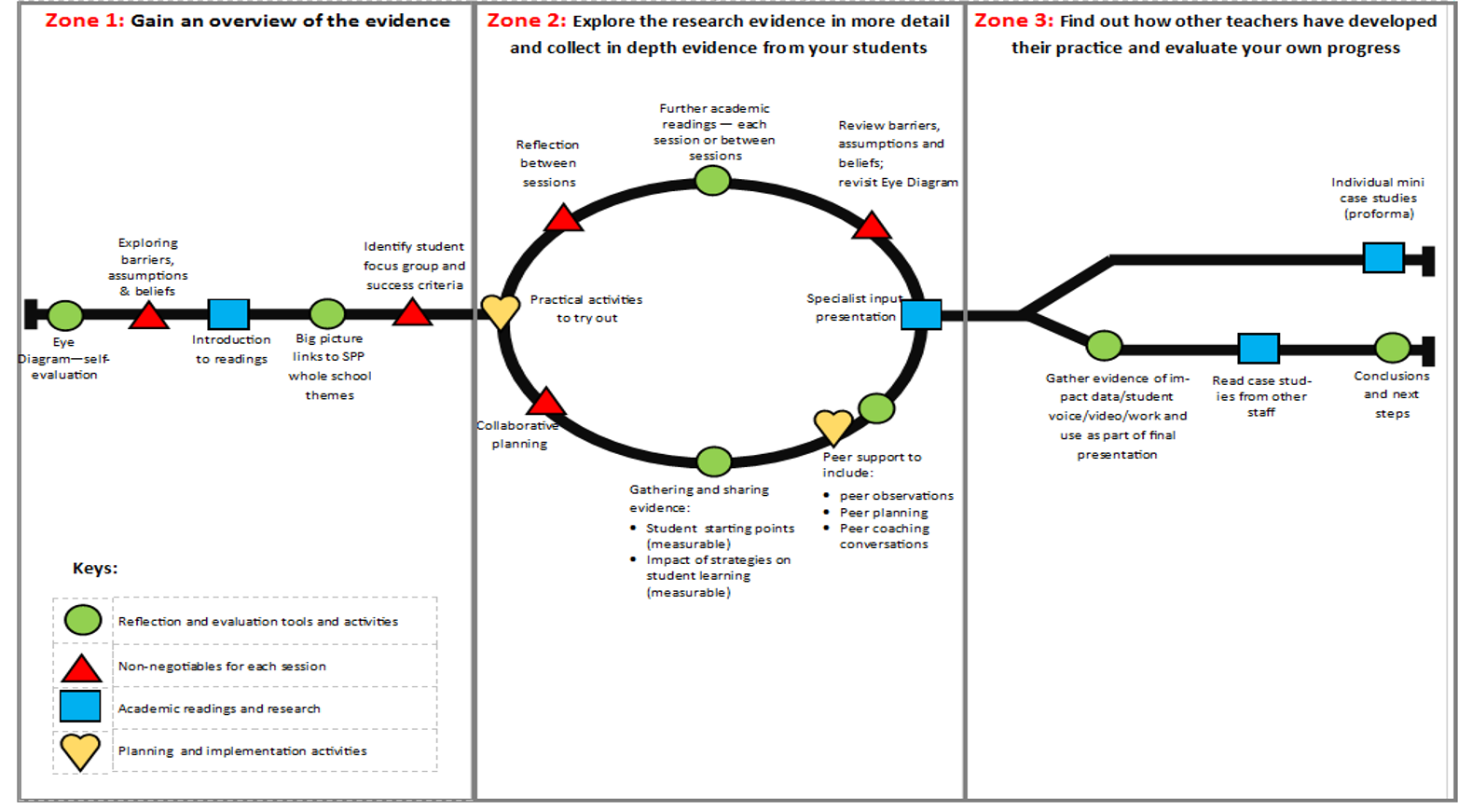
Reading time: 3 minutes. SSAT member insights: share your comments and feedback below.
Helen Marriott, deputy head of Little Ilford School, Newham, outlines how their new CPD delivery model was developed from case studies using staff’s existing expertise, views and knowledge
All too quickly, the festive season is over and it’s 2018. This article, about our CPD journey at Little Ilford School in Newham, is not about a completely new start. Instead, I want to look at how we refocused our professional learning by drawing on existing expertise, views and knowledge of our staff. And, unusually, the London tube map.
During 2015-16, our teaching and learning team had worked hard to establish a CPD programme which would give staff what they had asked for through surveys and focus groups: time for professional learning, a choice of pathways and courses, and an opportunity to engage with both theory and practice.
Our other key priority was to ensure that the learning was sustained over time, so we offered courses that lasted either for a term (three sessions) or for two terms (six sessions). The staff evaluations were really positive: staff had appreciated the time, choice and the way we had used both existing staff and external facilitators for delivery.
But it wasn’t enough. Kate, one of our teaching and learning coaches, hit the nail on the head: ‘We haven’t got the evaluation right yet. We need to focus more sharply on the impact on the pupils.’
She was right and we embarked on a project, working with the teacher research organisation, CUREE, where we began by looking at the way we evaluated our CPD and ended up refocusing our professional learning. We undertook a short-term pilot project (a bit of a gallop over four weeks!) which Kate and Fahima, one of our science teachers, led on, working with middle leaders and exploring approaches to metacognition. We drew on the CUREE model of providing staff with short ‘starters’ of research information in the form of summaries; easily digestible chunks with hyperlinks to additional information if they wanted to read more. The staff worked in pairs, choosing one particular approach and then using video and peer observation to evaluate how it worked. The project culminated in a case study which the staff involved co-constructed. We used their feedback to tweak this as a CPD delivery model before we launched it to the whole staff group.
Staff worked in pairs, choosing one particular approach and then using video and peer observation to evaluate how it worked
How would the staff respond, we wondered? We knew we were asking for more work if they were to provide a case study as the final outcome of each CPD course. The complaints never came. In fact, in a recent staff survey, they rated our CPD more positively than other schools nationally.
The other key aspect of the ‘journey’ has been to take the CUREE ‘route map’ for research, developed by Philippa Cordingley, and to use it to communicate the structure of our CPD courses (figure 1). It looks rather like the London tube map and illustrates the iterative nature of key aspects of our learning. Instead of the London travel ‘zones’, we have the different ‘zones’ or stages of professional learning which are consistent across all of the courses we offer. We wanted to highlight the importance of the initial zones/stages, where we had introduced a pre-course evaluation. This was crucial because it necessitated selecting a student focus group and considering how strategies from professional learning, peer discussions and observation would impact on those students.
We now have a compelling focus on students, rather than staff, and the process of learning itself is more transparent. The case study proforma, which staff use during the course of their professional learning and then complete at the end, includes planning for the success criteria and explores how research has been used to inform the strategies.
Looking forward to later in the year, we are excited about the potential impact of the case studies. On a practical level, staff will be able to access and benefit from each other’s work, helping to create a research culture. It also represents a shift in professional learning. Rather than a top-down model of CPD, the emphasis is on teachers’ knowledge and expertise, enhanced through research, application and collaborative learning.
We haven’t come to the end of our journey, but we do know we’re on the right road…
Read more about whole school CPD on the SSAT blog: An evidence base and a collaborative spirit can boost outcomes for all young people.

Find out more about Helen Marriott and the team at Little Ilford School

